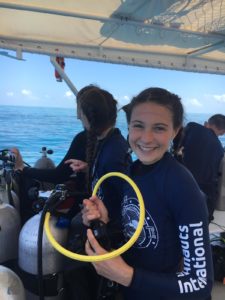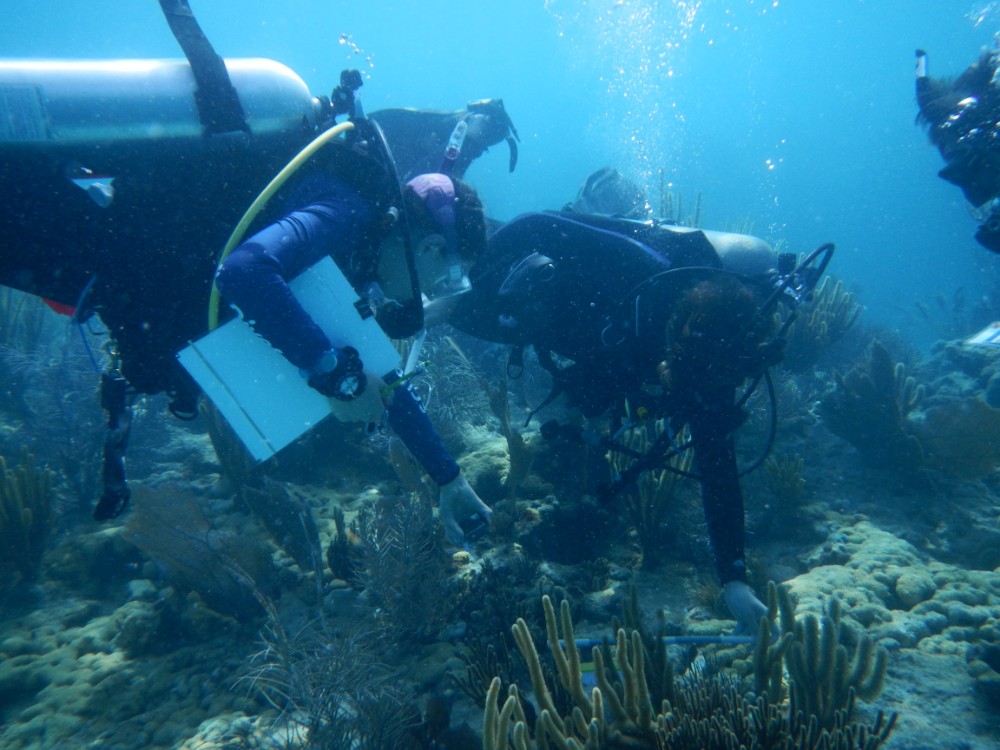Start the Day Right!
After a good night’s sleep, all the nauts woke up bright and early, bubbling with anticipation and excitement for the day ahead. Four dives were on the agenda, and everyone had prepared their gear the night before so that in the morning we could be timely and efficient in our departure to the dive locations. Immediately after waking up, the gracious land crew prepared the Nauts’ breakfasts. Having many dietary restrictions, I greatly appreciated the effort that land crew put into helping prepare my meals, going so far as to make tofu and vegan chili for me–a first for those chefs! Of course, the brownies were delicious too!
Time to Embark, Skills Come First
After breakfast, all the Nauts piled into the van and set off for the dive shop, Captain Hook’s. Everyone worked together to unload the gear and transport it to the boat. Before we knew it, the boat was ready to depart. All of our dives today were located on Looe Key Reef. After a thorough briefing, the Nauts and I were prepared as we began our first dive. To begin a week full of fun, the first dive consisted of reviewing skills and tasks that are essential to a safe, fun, and successful dive trip. Among these tasks, buoyancy was highly important as we would later be collecting data and dealing with extremely fragile corals.
Coral (and Friend) Identification
Next, dive number two introduced the nauts and me to identifying corals. After a week of reviewing coral species, I was prepared for identifying and understanding many corals on the reef. It was a proud moment for me as I was able to apply material I learned from SCUBAnauts to the real underwater world. This made the first two dives enjoyable and successful. In addition, working with new people on dives can sometimes be intimidating or scary, but I enjoyed stepping outside my comfort zone and meeting new people with whom I would be collecting data for the rest of the trip.
Stony Coral Tissue Loss Disease (SCTLD)
After coming back from a delicious lunch provided by the dive shop, the boat was ready to depart again. On the next two dives, the nauts in designated science groups worked together to identify both non-diseased and diseased corals with Stony Coral Tissue Loss Disease (SCTLD) and record the findings on data sheets. Clearly, this task requires knowledge of corals, good buoyancy, advanced diving skills, and patience. In order to record all of the corals in our surrounding area, we had to travel through the water at a slow pace. However, my science group accomplished this task and before we knew it, it was time to resurface and head back to shore. After a quick gear rinse and stow away for the next day, the nauts piled into the van to return to Mote. A much needed shower and dinner after a long day refueled us for the science meeting, in which a debriefing and wrap up concluded our work for today.



